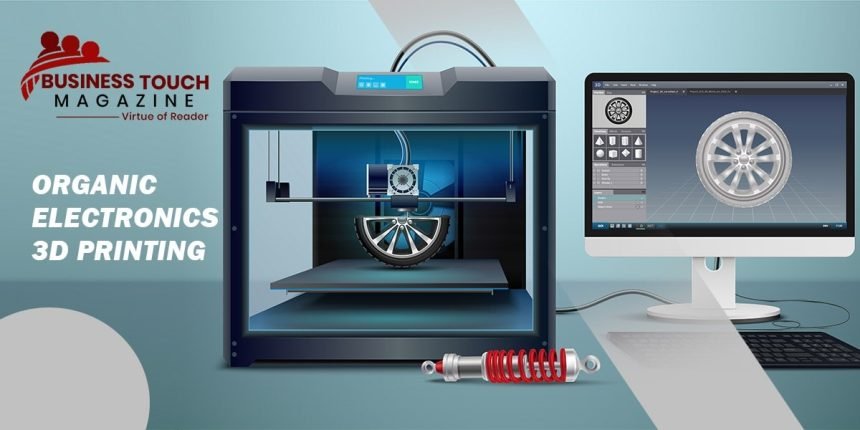As an associate professor of Biomedical Engineering at the University of Houston Cullen College of Engineering, Mohammad Reza Abidian has an eye on the future of organic micro-electronics fabrication through multiphoton 3-D printers.
His group’s latest publication investigates the potential of this technique. In Advanced Materials, researchers have published “Multiphoton Lithography of Organic Semiconductor Devices for 3D Printing Flexible Electronic Circuits, Biosensors, and Bioelectronics.”
The potential uses of 3D printing electronics in growing sectors like nanoelectronics and nanophotonics have made it a promising technology in the last few years. When it comes to three-dimensional microfabrication technologies, multiphoton lithography (MPL) is considered to be the most advanced because of its ability to create true three-dimensional structures, its ability to control space and time, and its ability to use photosensitive materials that are composed of either acrylic or epoxy photoresists.
According to Abidian: “In this article we presented a novel photosensitive resin doped with an organic semiconductor material (OS) to construct highly conductive 3D microstructures with high-quality structural features using MPL.”
Using flexible polymer substrates and glass as fabrication substrates, they demonstrated (dimethylsilosane). In their study, they found that the electrical conductivity of printed organic semiconductor composite polymer was improved by ten orders of magnitude when just 0.5wt% OS was loaded into resin.
Because OS is present in cross-linked polymer chains, “the outstanding electrical conductivity may be ascribed to its presence, enabling both ionic and electronic conduction paths along the polymer chains,” Abidian added.
Using the OS composite resin, his team created several microelectronic devices such as a micro-printed circuit board and an array of microcapacitors in order to illustrate its potential electronic uses.
Tissue engineering, bioelectronics, and biosensors might benefit from MPL-based 3D bioprinting of organic semiconductor microdevices. Laminin and glucose oxidase were effectively introduced into the OS composite microstructures by Abidian’s team. (OSCMs). Primary mouse endothelial cells were grown on OS composite microstructures to verify that laminin bioactivity was maintained throughout the MPL process. OSCMs integrated with laminin showed signs of substrate adhesion, proliferation, and improved survival in cells planted on the OSCMs.
“Splenic T and B cells were cultured on the OS composite constructions and compared to control surfaces in order to determine their biocompatibility. When compared to the control surfaces, OS composite polymers did not cause cell death after seven days of culture “Abidian said. “OS composite polymers were also tested for their possible impact on cell activation. Activation indicators on lymphocytes were not significantly different between OS composite structures and control surfaces after seven days of culture.”
A maskless MPL-based approach for fabricating bioelectronics and biosensors was presented by Abidian as a last step in the research process They created a glucose biosensor that resembles the electrodes used in Michigan. The MPL method was used to encapsulate glucose oxidase, an enzyme that specifically recognizes glucose, within the solidified OS composite microelectrodes. With a sensitivity about 10 times greater than earlier glucose biosensors, the biosensor provided a very sensitive glucose sensing platform. Furthermore, this biosensor has a high degree of selectivity and repeatability in its performance.
These MPL-compatible OS composite resins are expected to open the way for soft, bioactive, and conductive microstructures to be produced for different applications in the burgeoning disciplines of flexible bioelectronics, sensors, nanoelectronics, and organ-on-chips, as well as immunocell treatments. ” Abidian opined
Omid Dadras-Toussi, Milad Khorrami, and Anto Sam Crosslee Louis Sam Titus are all co-authors of the article, which was published in the journal PLOS One. Dadras-Toussi will start a new career at Medtronic, an S&P 100 firm with $30 billion in annual sales, this month, according to Abidian, who commended the research efforts of his pupils.
Additionally, Hugh Roy and Lillie Cranz Cullen Endowed Professor of Biomedical Engineering and Associate Professor SheereenMajd from UH’s Cullen College of Engineering contributed to the paper as co-authors. As Abidian put it, his colleagues were critical to the project’s success.




